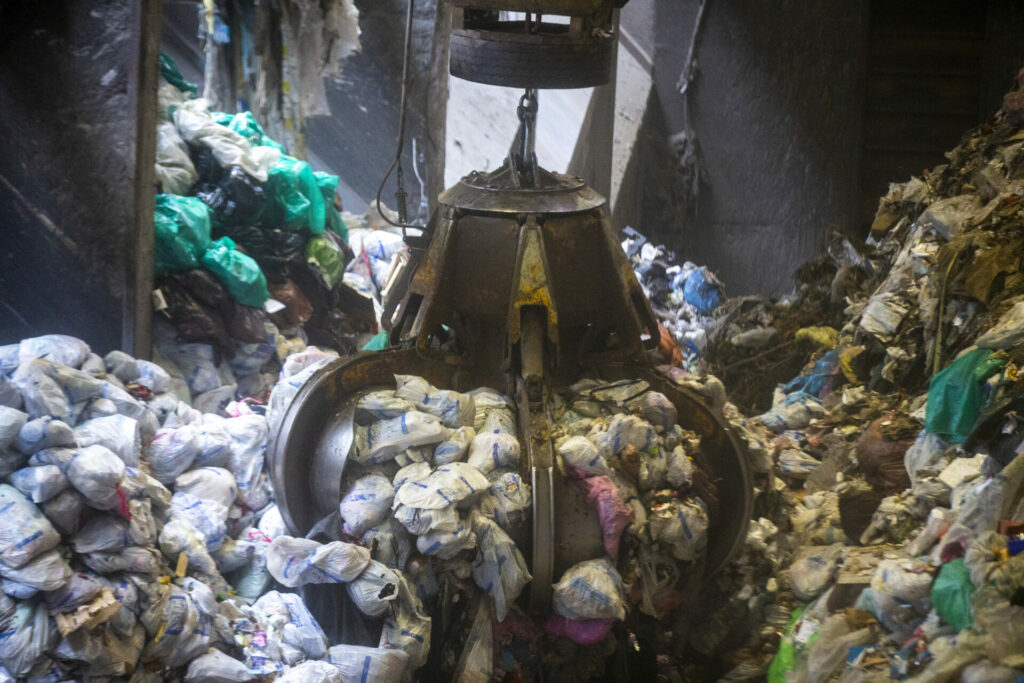In a bid to turn waste into raw materials and limit the impact it has on climate change and human health, entrepreneurs are coming up with innovative ways to use waste materials as new resources to create objects, clothes, jewellery, and eco-friendly cosmetics.
Here are ten of the most unusual and innovative initiatives that are currently turning waste into wonders, RTBF reports.
1. Beer-based jeans
The famous Sapporo Breweries in Japan has partnered with Shima Denim Works to turn some of its waste from brewing beer into jeans. The waste leftover from using malt and hop leaves and stems in the brewing process has been transformed into washi, a traditional Japanese paper, which itself has been spun and woven into several dozen pairs of jeans. At present this is a small-scale operation but it could, however, pave the way for a new generation of denim.
2. Airbag and windshield clothing
Waste from the automotive industry has been utilised by many fashion players over the years. As surprising as it may seem, car manufacturers, artists and independent contractors have come up with the idea of recycling airbags, windshields, seats, truck tarps and other seat belts into trendy clothing. Zurich brand Freitag, Hyundai, Mercedes, Heron Preston and the designer Ryohei Kawanishi, have all presented collections based on clothes and accessories made from auto waste.
3. Fish and chip dishes
British designer Carly Breame is making tableware made from leftover fish and chips from Angela's fish restaurant, nestled in Margate, south-east London. As part of a one-off project, the artist recovered the fish bones from the leftover food to reduce them to powder and develop a material to compose the base of a ceramic while the skins of the potatoes were used to varnish the plates.
4. A crab-based battery
Bulky and particularly smelly, seafood waste does not usually linger in our household bin for too long. But that could soon change thanks to a discovery made by American scientists who have developed a prototype battery from crab shell residues, the objective being to eventually replace lithium.
Related News
- French biodegradable 'biocell' battery aims to reduce waste and improve safety
- 'Water cremation': A more environmentally-friendly way to go?
By gelling chitosan, a constituent of crustacean shells, the researchers managed to turn it into an electrolyte, a mineral capable of carrying an electrical charge, and mix it with zinc, creating a battery which is almost entirely biodegradable. Currently, at the prototype stage, the battery needs further testing before it can be deployed on a larger scale.
5. Sneakers from sushi
The fish skin discarded from a Sushi Shop restaurant in Lyon has been used by the brand O.T.A. Paris to customise a pair of sneakers. More specifically, the logo of these sneakers has been designed in upcycled salmon skin, combined with a recycled tire and rubber sole and laces made of natural cotton fibres. Not to be outdone, another French designer, Eugène Riconneaus is making pairs of trainers from fishing nets, seafood shells and green algae collected from the French coast.
6. Subway seats turned into slippers
French designers Sans Les Plumes offer collections of "urban slippers" and sneakers created from the fabrics that cover the seats of Parisian metros and trams as a way to limit textile waste. The brand has also imagined interior slippers designed from velvet taken from the seats of the Palais Nouveau Siècle or French opera and theatre halls.
7. Apples to insulate buildings
The Adaozañ project has had the ingenious idea of transforming apple pomace - the solid remains leftover from juicing - from the cider sector into an eco-material similar to cork but able to be worked like wood. This process gives the apple waste a second life as an object in furniture, cladding and even insulation for buildings. Apple waste is of wider interest to many industries, including fashion, which already uses it to make handbags and sneakers.
8. Plastic turns into fuel
As we know, plastic waste is one of the biggest environmental disasters. That's why the American start-up Select Fuel has been working to turn it into fuel. This has been made possible thanks to new technologies developed by the company, which estimates that at least 75% of plastic waste can potentially be transformed into multiple bioenergy products. This is not the only source of renewable fuels being studied, since used oil, food waste, or grass could also eventually be used to power many means of transport.
9. Tomato to replace bisphenol A
Singled out for many years for its effects on health, bisphenol A is the subject of numerous scientific studies due to the dangers that it poses as an ingredient in food containers. To counter this threat, a group of scientists from the universities of Seville, Malaga and Genoa have developed an innovative material from tomato waste which could eventually be used as a coating to be applied in certain food containers, including cans.
10. A PCB-style pendant
More than 53 million tons of e-waste were produced worldwide in 2019 but only a tiny fraction is currently recycled. A considerable loss if we consider that some of this waste is composed of precious metals such as gold, silver, platinum or copper. This is an observation that has not gone unnoticed by jewellers who are now working to recycle them. Oushaba, creates real works of art from printed circuits and cables of all kinds, while Courbet and Lylie Jewellery both offer creations made from recycled gold.

